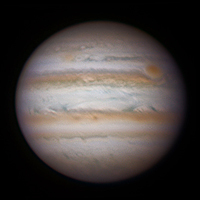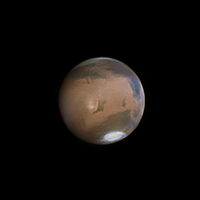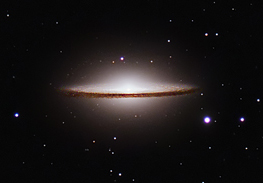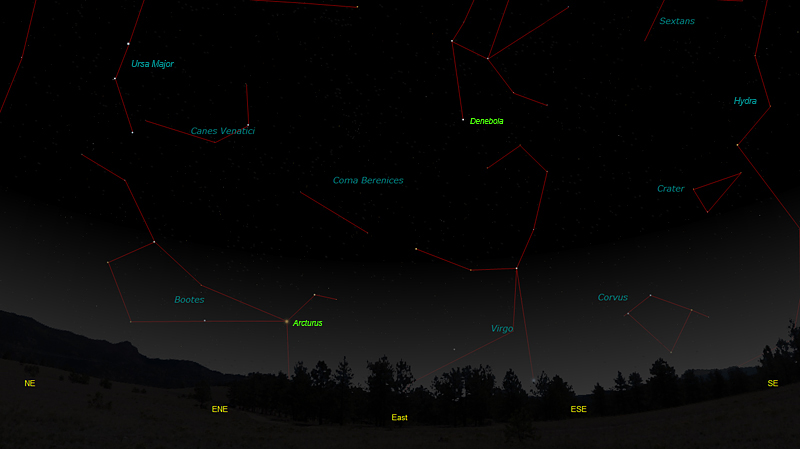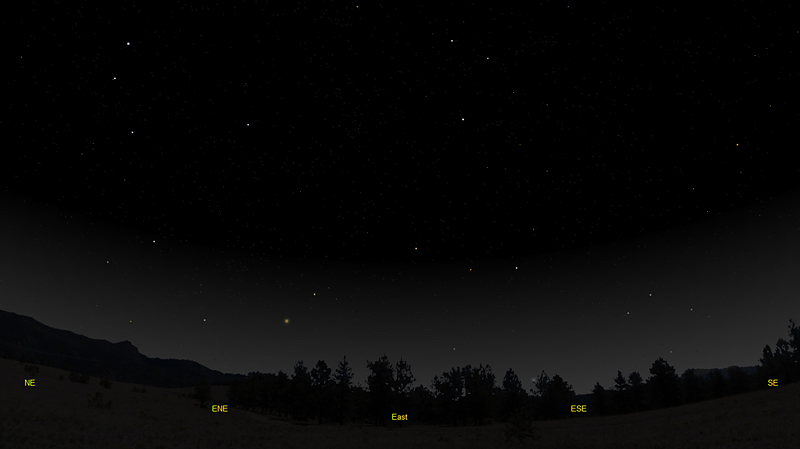The purpose of this feature is to give scout leaders, educators and naturalists an idea of some of the natural events coming up each month. We will try to cover a variety of natural events ranging from sky events to calling periods of amphibians, bird and mammal watching tips, prominent wildflowers and anything else that comes to mind. We will also note prominent constellations appearing over the eastern horizon at mid-evening each month for our area for those who would like to learn the constellations. If you have suggestions for other types of natural information you would like to see added to this calendar, let us know! Note: You can click on the hyperlinks to learn more about some of the featured items. To return to the Calendar, hit the "back" button on your browser, NOT the "back" button on the web page. All charts are available in a "printer friendly" mode, with black stars on a white background. Left clicking on each chart will take you to a printable black and white image. Please note that images on these pages are meant to be displayed at 100%. If your browser zooms into a higher magnification than that, the images may lose quality. Though we link book references to nationwide sources, we encourage you to support your local book store whenever possible.
Sky Events for March 2014: The Vernal Equinox, marking the beginning of Spring in the Northern Hemisphere, occurs at 11:57am CDT on the morning of March 20th. Evening Sky:
Jupiter continues its slow march across the constellation Gemini in March. Now is a great time to see the great planet. Binoculars, if held steady, will show the four Galilean moons when they are not transiting the planet or being eclipsed. Mars rises around 9:14pm at the beginning of March in Virgo. Mars reaches opposition to Earth in April of this year, so Mars and Earth are approaching each other. Mars grows from an apparent size of 11.6 seconds of an arc to 14.6 seconds of an arc, allowing details to be seen by those patient enough to wait for good seeing. For the best views, wait until Mars has climbed high in the sky. Much of the time Mars looks like a dim reddish star, but near oppositions it glows like a hot coal. Saturn rises about 11:19am on March 1st in Libra. As with Mars, to get the best telescopic views wait until the planet has climbed high in the sky just before dawn. Morning Sky: Venus shines brightly in the dawn sky during March. It reaches greatest elongation from the Sun on March 14th. Look for Mercury low in the east during the last week of the month. It reaches greatest elongation from the Sun on March 22nd. Constellations: The views below show the sky looking east at 9:00pm CDT on March 8th. The first view shows the sky with the constellation outlines and names depicted. Star and planet names are in green. Constellation names are in blue. The second view shows the same scene without labels. The bright star Arcturus, in Bootes, the Herdsman, makes its appearance this month in the early evening sky, a sure sign that Spring is here. The planet Mars, approaching opposition in April, is just above the horizon in the east but hidden by trees in the chart below. Virgo clears the horizon this month along with Corvus, the Crow. The area of sky encompassing Leo, Virgo and Como Berenices marks the heart of the great Virgo cluster of galaxies. In the early morning hours Virgo will have risen high enough in the sky to search for the many bright galaxies that are in this region. Messier 104, in southern Virgo just above Corvus, is one of the easier galaxies to spot in binoculars. Click the image above to go to a full size image and a binocular finder chart.
On Learning the Constellations: We advise learning a few constellations each month, and then following them through the seasons. Once you associate a particular constellation coming over the eastern horizon at a certain time of year, you may start thinking about it like an old friend, looking forward to its arrival each season. The stars in the evening scene above, for instance, will always be in the same place relative to the horizon at the same time and date each March. Of course, the planets do move slowly through the constellations, but with practice you will learn to identify them from their appearance. In particular, learn the brightest stars (Like Arcturus and Denebola in the above scene looking east), for they will guide you to the fainter stars. Once you can locate the more prominent constellations, you can "branch out" to other constellations around them. It may take you a little while to get a sense of scale, to translate what you see on the computer screen or what you see on the page of a book to what you see in the sky. Look for patterns, like the stars of Corvus the Crow. The earth's rotation causes the constellations to appear to move across the sky just as the sun and the moon appear to do. If you go outside earlier than the time shown on the charts, the constellations will be lower to the eastern horizon. If you observe later, they will have climbed higher. As each season progresses, the earth's motion around the sun causes the constellations to appear a little farther towards the west each night for any given time of night. The westward motion of the constellations is equivalent to two hours per month. Recommended: Sky & Telescope's Pocket Star Atlas is beautiful, compact star atlas. A good book to learn the constellations is Patterns in the Sky, by Hewitt-White. You may also want to check out at H. A. Rey's classic, The Stars, A New Way to See Them. For skywatching tips, an inexpensive good guide is Secrets of Stargazing, by Becky Ramotowski. A good general reference book on astronomy is the Peterson
Field Guide,
A Field Guide to the Stars and Planets, by Pasachoff. The book retails for around $14.00. Starry Night has several software programs for learning the night sky. Visit the Starry Night web site at www.starrynight.com for details. The Virtual Moon Atlas is a terrific way to learn the surface features of the Moon. And it's free software. You can download the Virtual Moon Atlas here. Cartes du Ciel (described in the monthly notes above) is a great program for finding your way around the sky. It is also free, and can be downloaded here. Apps: We really love the Sky Safari 3 Pro application described here. For upcoming events, the Sky Week application is quite nice. Both apps are available for both I-phone and Android operating systems.
Amphibians:
What a crazy winter! January and the first two weeks of February were almost completely silent for us in terms of calling frogs and toads. Then the suddenly warming temperatures brought a flood of anuran sound. Running our TAMP frog route on February 19th, we heard Upland Chorus Frogs, Spring Peepers and American Toads, and our Southern Leopard Frogs were calling at our pond when we returned home. Now, as I write this, another 14 degree Fahrenheit low is expected, so I expect everything to go quiet again. Hopefully we will get warmer temps soon. For a typical March, Crawfish Frogs give their loud snoring calls early in the month in West Tennessee. At higher elevations, listen for Mountain Chorus Frogs. Towards the end of the month listen for Pickerel Frogs doing their "yeeooow" call. Remember that on mild nights you may find frogs and toads out foraging that you do not hear until later in the season. On warm days listen for early treefrogs, like Cope's Gray Treefrog, and for early Northern Cricket Frogs. The Northern Cricket Frogs at our pond often call just before a train passes by our field, possibly stimulated by the vibrations. Recommended: The Frogs and Toads of North America, Lang Elliott, Houghton Mifflin Co.
Archives (Remember to use the back button on your browser, NOT the back button on the web page!) Natural Calendar February 2014 Natural Calendar December 2013 Natural Calendar November 2013 Natural Calendar September 2013 Natural Calendar December 2012 Natural Calendar November 2012 Natural Calendar September 2012 Natural Calendar February 2012 Natural Calendar December 2011 Natural Calendar November 2011 Natural Calendar September 2011 Natural Calendar February 2011 Natural Calendar December 2010 Natural Calendar November 2010 Natural Calendar September 2010 Natural Calendar February 2010 Natural Calendar December 2009 Natural Calendar November 2009 Natural Calendar September 2009 Natural Calendar February 2009 Natural Calendar December 2008 Natural Calendar November 2008 Natural Calendar September 2008 Natural Calendar February 2008 Natural Calendar December 2007 Natural Calendar November 2007 Natural Calendar September 2007 Natural Calendar February 2007 Natural Calendar December 2006 Natural Calendar November 2006 Natural Calendar September 2006 Natural Calendar February 2006
Natural Calendar
December 2005
Natural Calendar
November 2005
Natural Calendar
September 2005
Natural Calendar
February 2005
Natural Calendar
December 2004
Natural Calendar
November 2004
Natural Calendar
September 2004
Natural Calendar
February 2004
Natural Calendar
December 2003
Natural Calendar
November 2003
Natural Calendar
September 2003 Natural Calendar February 2003 Natural Calendar December 2002 Natural Calendar November 2002 Nature Notes Archives: Nature Notes was a page we published in 2001 and 2002 containing our observations about everything from the northern lights display of November 2001 to frog and salamander egg masses. Night scenes prepared with The Sky Professional from Software Bisque All images and recordings © 2014 Leaps |
|||||||
